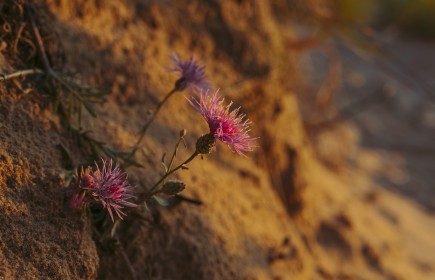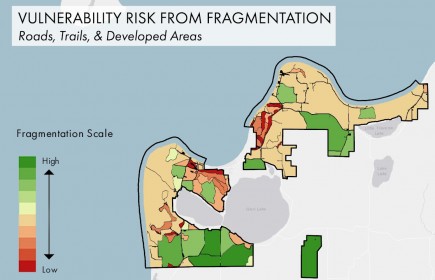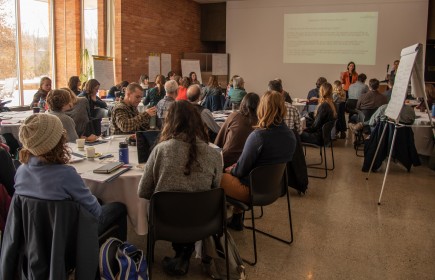
Increasing resistance and reducing vulnerability to invasive species at Sleeping Bear Dunes National Lakeshore
Invasive plant species pose a significant threat to long-term ecosystem health, especially as new invasives continue to arise. Current invasive management strategies mainly focus on reducing or eliminating single species through chemical and physical removal methods; however, this reactive approach is often costly, time-intensive, and lacks long-term success. Many practitioners are increasingly interested in a preemptive, resistance-based approach to management that focuses instead on reducing an ecosystem’s vulnerability to invasion, which would allow practitioners to address multiple invasives at once, increasing the efficiency, cost-effectiveness, and overall sustainability of managing invasive species. We aimed to meet the need for improved understanding and ability to implement this alternative systems-based management approach, specifically as it applied to the Sleeping Bear Dunes National Lakeshore (SBDNL).
We used three main sources to inform our recommendations:
1) Review of current research on resistance and vulnerability to invasion
2) Analysis of existing monitoring and spatial data at SBDNL related to the vulnerability
3) Perspectives and experience of on-the ground practitioners
Bethany Louria, Daphne Onsay, Stephanie Peters, Emma Sloan, Sara Steenbergh, Gabrielle Vinyard
Project Focuses

Bethany is a Master's student at the University of Michigan School for Environment and Sustainability specializing in Ecosystem Science and Management and Geospatial Data Sciences.
Prior to SEAS, Bethany graduated from the University of Michigan in 2019 with a B.S. in Environmental Sciences. She conducted research in 2018 on Linaria dalmatica, an aggressive invader of western Montana grasslands, and has volunteered with Ann Arbor Natural Area Preservation. After graduating, she hopes to pursue a career in ecology working for public lands in the United States.

Daphne is a Master's student at the University of Michigan School for Environment and Sustainability specializing in Ecosystem Science and Management.
She holds a BS in Environmental Biology/Plant Biology from Michigan State University. Throughout her undergraduate education, Daphne took on various research projects including research assistant positions at Michigan State. She explored controlled environmental horticulture during three internships in Space Crop Production at NASA-Kennedy Space Center. Her coursework at SEAS inspired her to focus on forest systems, specifically invasive plant communities.

Stephanie is a Master's student at the University of Michigan School for Environment and Sustainability specializing in Sustainable Systems.
Before attending graduate school, Stephanie earned a B.S. degree in Environmental Science with a concentration in Resource Management and Sustainability and a minor in Biology. Stephanie worked as an assistant researcher in an environmental chemistry lab at Oakland University. She also worked as an intern for the Lake St. Clair Cooperative Invasive Species Management Area (CISMA), where she focused on identifying and mapping invasive species.

Emma is a Master's student at the University of Michigan School for Environment and Sustainability specializing Behavior, Education, and Communication and Ecosystem Science and Management.
She holds a BA in English, Nonfiction Writing, from Brown University. Emma is interested in restructuring environmental sustainability education and increasing the accessibility of scientific research. At Brown, Emma co-founded the course Birding Communities, where undergraduates are paired with elementary students on educational birding and nature walks. A bird enthusiast, she enjoys playing folk music with her rescued European Starling, Zuko.

Sara is a third-year dual-degree Masters's student at the University of Michigan, where she is studying Landscape Architecture and Conservation Ecology.
She is interested in ecological and equitable design and how they influence each other. She has a Bachelor of Arts degree from the University of Michigan in English and French and spent several years in the professional world before she did a career U-turn and returned to school where she has been inspired and enraptured by the natural world.

Gabrielle is a Master's student at the University of Michigan School for Environment and Sustainability specializing in Ecosystem Science and Management.
Although she has always been fascinated by animals, an incredible botany professor inspired her to explore the world of plants. Before her graduate degree, she worked for The Nature Conservancy’s Michigan dune crew, so she was excited to learn there was a master’s project that was so closely tied to her passions and looks forward to addressing restoration and invasive management challenges in her future career.





